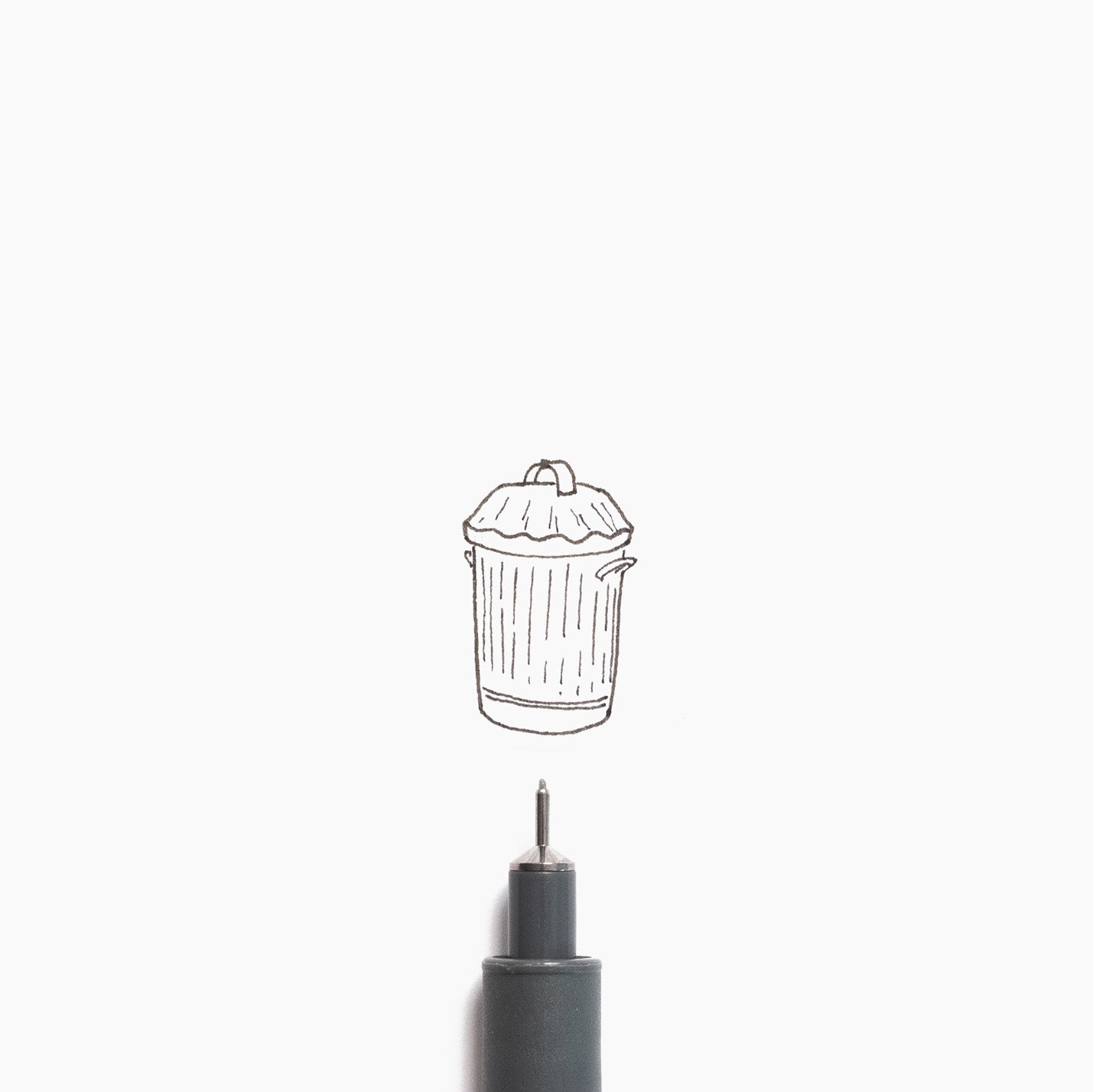I started my business six years ago with £700 and access to my father-in-law's lathe. For the first four years, I solely handmade calligraphy and writing pens, pouring any profit back into the business. Recently, I took a step back from the handmaking because I knew my scale and impact as a business were limited to the 40 or so pens I could make every month. I wanted to make a larger impact in an industry that has mindlessly produced disposable products for decades!
As you can tell from the above, I’m a tiny fish in a very large pond of stationery brands, such as BIC, Pentel, and Zebra. I feel like this could be warming up to be a bit of a David and Goliath story.
As you can tell from the above, I’m a tiny fish in a very large pond of stationery brands, such as BIC, Pentel, and Zebra. I feel like this could be warming up to be a bit of a David and Goliath story.
These enormous brands share big chunks of a $15.9 billion-dollar global industry that relies on consumers continually buying a new pen or refill. On average, an American will use five disposable ballpoint pens each year, and globally, nine billion pens are thrown away.
This is despite the average lifespan of a rollerball tip lasting for 20,000km of writing but running out of ink at 2km and thus making itself obsolete. This is the difference between writing 50,000 words with the pen and 500,000 words if the ink could be replaced up to the lifespan of the tip. The big companies obviously look at this information and think, "we can’t sell pens at a 10x slower rate," and so the cycle continues!
This is despite the average lifespan of a rollerball tip lasting for 20,000km of writing but running out of ink at 2km and thus making itself obsolete. This is the difference between writing 50,000 words with the pen and 500,000 words if the ink could be replaced up to the lifespan of the tip. The big companies obviously look at this information and think, "we can’t sell pens at a 10x slower rate," and so the cycle continues!
For me, it’s like throwing away a perfectly delicious apple after one bite because a whole orchard needs eating. (Better analogies welcome!).
It’s my mission to change the status quo by designing and making pens with no planned obsolescence. In my mind, there are a few ways of achieving this:
- Make pens that are built to last from extremely durable materials that are preferably recyclable and easily separated.
- Have the ability to replace parts and tips if and when they need to be refreshed.
- Make the pens refillable so that the ink in your pen can be quickly and easily refilled using a bottle of ink rather than disposable ink cartridges and refills.
Here’s a comparison between my Lumos pen and a disposable fineliner.
The Lumos:
The Lumos:

- Materials: aluminum body, Delrin (an engineering grade plastic, which is used to isolate metals to stop corrosion), and stainless steel that has been PVD coated to further enhance the durability. Each of these materials can be easily separated and recycled at the end of its (hopefully very long) life. Each part can also be replaced if needed.
- Packaging: fully recyclable paper and board (not 100% FSC yet, but I’m working on it).
- Refillable reservoir: this feature allows the user to refill the pen with any color of ink from a bottle of their choice.
- Tips: these are high-quality Japanese tips, and one pen can hold 12 different tip types. Their size is purposefully as small as possible so that it has the least environmental impact when it’s at the end of its life.
The standard fineliner:

- Materials: polypropylene, which is a durable and versatile plastic that outlives the pen’s usable life probably by millennia! You can recycle PP, but it’s an expensive and not widely offered process. For a cheap pen that would need to be disassembled with pliers from its constituent parts, you’d be hard-pressed to find a recycling facility that wouldn’t just dispose of the pen.
- Packaging: also polypropylene.
- Reservoir: non-refillable.
- Tips: non-replaceable, and a new pen is needed for every single tip size.
It’s a sad state of affairs, and I hope you will join me on my mission to create products that are refillable, last a lifetime, and are a joy to use!
I’d love to know if you have any feedback, thoughts, or suggestions, so please feel free to email me directly at tom@tomsstudio.co.uk.
I’d love to know if you have any feedback, thoughts, or suggestions, so please feel free to email me directly at tom@tomsstudio.co.uk.

